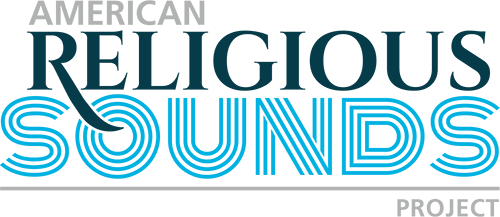Turning the Religious Sounds Project into a Midterm
by Shyam K. Sriram, Ph.D. (ssriram@butler.edu)
Butler University
For the last three years, I have taught an upper-division seminar on “Religion and American Politics” that allows me to engage students, mostly political science majors, on a myriad of topics that meet at the intersection of race, gender, politics, immigration, and religion. I like to arrange the course around a certain theme; the first time was Islamophobia and Muslim voices; second was moral panics; and this semester it has been on Jewish voices.
As I was preparing my syllabus, I read DeRogatis and Weiner’s (2020) “Teaching Tactic” and thought it would make a great in-class activity. The beauty of the American Religious Sounds Project (ARSP) is that it is ideal for our new online reality; the whole class can listen to sounds in real time over Zoom, but it can be assigned in breakout rooms too. However, I decided to adapt this project into a midterm paper worth 25 percent of their class grade. The paper had to be at least 750 words and include five academic sources (not including the ARSP). My rubric:
| Question | Points |
|
Section 1: What are the five sounds you chose? [Provide embedded links from the ARSP] Why did you choose them? What were your criteria?[1] |
10 |
|
Section 2: Are the clips religious, kind of religious, or not religious at all? If the last category, then what is their value being included in this database? |
5 |
|
Section 3: What do you expect religion to sound like? What makes a sound religious? Who decides? |
5 |
|
Section 4: What types of information do you need to label a sound religious? What information do you need that you do not have? |
5 |
|
Section 5: Would it be easier to decide if something were religious by reading a text or looking at an object? How does hearing a practice differ from reading about it or watching it? |
10 |
|
Your paper must include at least FIVE academic sources.[2] |
5 |
[1] My initial idea was for students to choose five different states, but after examining the data, I realized most recordings were from OH and MI.
[2] I provided a list of “good academic sources” and a sample of those to be avoided.
The 10 seminar participants represented quite an array of religious traditions including Russian Orthodoxy, Sikhism, Protestantism, and Catholicism, but I was impressed how the students really pushed themselves to discover new religious traditions and sounds. Two students each chose the 2016 Pierogi Festival in Detroit, MI; a 2015 flute performance in Grand Rapids, OH; a 2016 Black Lives Matters (BLM) protest in Columbus, OH; and a 2019 kirtan in Maryland Heights, MO. Other than that, the students chose 26 other distinct sounds, which I found interesting and indicative of the richness of the ARSP.
Despite being a small seminar, there was quite a variety of opinions on what constituted a sound that was “religious, kind of religious, or not religious at all” (Section 2). One difficulty some had was over the definition of religion versus spirituality with one student struggling with Sanskrit chanting being religious and “their god, Krishna.” Another student who was not Muslim, was outraged a mosque was converted into a polling location, arguing first that it was not a sound and second, a “politicization of the entire religion.”
I asked students to define how religion should sound and who sets those criteria (Section 3 of the rubric), as well as the difference between aural and textual religious sources (Section 5). This challenged the seminar to do the heavy lifting and gave them agency to determine their own criteria and support those choices. According to one student, “In order for a sound to be religious, I think it needs to somehow unite a group of people within a certain faith.” His belief in unity pervaded all five of his sounds and this became the benchmark for his understanding of a religious sound. Unity is also how a second student defined a religious sound: “people coming together and making sounds in the name of a religion.”
However, another student had a vastly different perspective; she wrote,
“I think the people who decide whether a sound is religious or not are the people who belong to the religion whose sound is in question. These are the people who give meaning to the sound so they are the ones who should judge whether the sound is religious or not.”
One of her peers argued the opposite, explaining that “a defining quality of a religious sound is the intent that went into producing the sound.” While the former believed that meaning would be provided by those outside a particular faith, the latter felt it was not about the audience at all.
Lastly, one student admitted to a personal Christian “bias” when she described sounds as being Christian if they contained a vocal or choral element. She defined a BLM protest as religious because of chanting, but admitted to not using the same criteria for flautist Mark Thunderwalker Camden at an arts festival because it was not “verbal.”
The ARSP is an incredible and unique resource that documents Americans in a way that few others have attempted. From a Christian preacher blowing a shofar in Cleveland, OH and Shabbat services in River Hills, WI to the Guru Nanak Religious Society in Columbus, OH and the sounds of rustling leaves at St. Gregory’s Abbey in Three Rivers, MI, my students and I engaged with American religious practice through its sounds and I encourage you to attempt this journey in your colleges.


